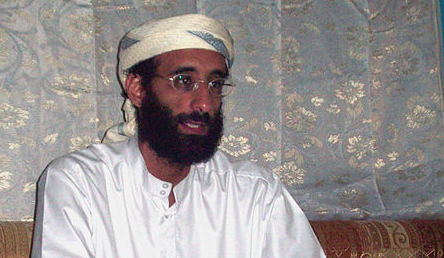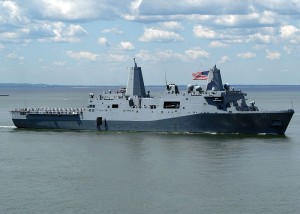Anwar al-Awlaki: Two Days from Finalized 302 to OLC Authorization for Execution
After a multiple year FOIA fight, Scott Shane has liberated the interrogation 302s from Umar Farouk Abdulmutallab. Kudos to Shane and NYT.
As Shane recalls in his story on the reports, I have noted problems about the government’s public claims about Abdulmutallab’s interrogation (even aside from conflicts with his other confessions and the terms under which the interrogation took place). The reports in some ways confirm those concerns — as I’ll write in some follow-up posts. But, more important, they also answer the most fundamental ones.
Some of the reports absolutely support the government’s claim that from Abdulmutallab’s first interrogations in January 2010, he attributed the instructions to wait until he was over the US to detonate his underwear bomb to Anwar al-Awlaki, which was always a key basis for the government’s argument they could execute the cleric.
Near the end of [Abdulmutallab’s — he is referred to as UM throughout these reports] stay at the camp, Aulaqi gave UM final specific instructions: that the operation should be conducted on a U.S. airliner;
[snip]
Aulaqi told UM: “Wait until you are in the US, then bring the plane down.” [PDF 24]
As a number of people have observed, the reports also show that (aside from the isolation later alleged by Abdulmutallab’s lawyers and whatever leverage the FBI got his family to exert), the FBI and the High Value Interrogation Group got a great deal of cooperation from Abdulmutallab without physical coercion, with Abdulmutallab providing intelligence on AQAP into the summer.
In this post, though, I want to note how the reports coincide with two other events from that period of 2010.
As many of you know, there’s a big, still somewhat unsolved problem with FBI interrogations. At the time, FBI didn’t record interrogations (and they still create big loopholes around a recently imposed rule that custodial interviews must be recorded). Rather, the FBI agent would take notes and subsequently write up those notes into a “302,” which is what the FBI calls their reports on interviews.
In Abdulmutallab’s case, there was an interesting lag between the time his interrogators conducted the interrogation and when they wrote it up. For example, his January 29, 2010 interrogation (and all the ones from the subsequent intense period of interrogation), were not dictated until February 5, 2010.
And those dictations did not start to get transcribed into finished 302s until starting on February 17, 19 days after the interrogation.
Let me be clear: there is nothing suspect about the delay. The timing cues in the interrogation makes it clear these initial interrogations were full-day interrogations. Add in the preparation time interrogators would have to do overnight, and it makes sense that they wouldn’t dictate out their notes until the end of the week (though that is yet another reason FBI Agents should always make recordings of interrogations). Moreover, the one week delay is not so long that an agent would forget substantial parts of the interrogation. Plus, a federal defender was present and could have challenged any problems with this report.
So we should assume the report is a fair indication of the conduct of the interrogation.
I’m more interested in the timing of other events in early 2010.
Consider the public comments Director of National Intelligence Dennis Blair made on February 3, at a House Intelligence hearing. Responding to a Dana Priest article from the prior week, Blair assured Congress they get specific permission before they drone kill an American citizen (there are a bunch of still unreleased memos that suggest they were actually still working on this policy).
“We take direct actions against terrorists in the intelligence community,” he said. “If we think that direct action will involve killing an American, we get specific permission to do that.”
He also said there are criteria that must be met to authorize the killing of a U.S. citizen that include “whether that American is involved in a group that is trying to attack us, whether that American is a threat to other Americans. Those are the factors involved.”
Obliquely asked about Awlaki, Blair responded that they would only kill an American “for taking action that threatens Americans or has resulted in it” — a standard that falls short of what OLC would eventually adopt, but one it appears they believed they had already surpassed with Awlaki.
“So there is a framework and a policy for what’s hypothetically a radical born cleric … who’s living outside of the United States, there’s a clear path as to when this person may be engaging in free speech overseas and when he may have moved into recruitment or when he may have moved into actual coordinating and carrying out or coordinating attacks against the United States?”
Mr. Blair responded that he would rather not discuss the details of this criteria in open session, but he assured: “We don’t target people for free speech. We target them for taking action that threatens Americans or has resulted in it.”
That comment was made after Abdulmutallab had implicated Awlaki in giving him final orders, but before it had been dictated, much less transcribed.
Then there’s the first of two OLC memos written to authorize Awlaki’s execution. That was finalized on February 19, 2010, just two days after the first 302 implicating Awlaki in final instructions for the attack was finished.
That is, only two days elapsed from the time that the one document we know of memorializing Abdulmutallab’s confession for David Barron to authorize Awlaki’s execution.
That’s also not that surprising. After all, the government deemed (and had, before this time) Awlaki to be an urgent threat, and they shouldn’t be faulted for wanting to prepare to respond to any opportunity to neutralize it, as quickly as possible. Moreover, unlike the subsequent OLC memo, this one doesn’t appear to analyze the intelligence on Awlaki closely — it just deems him a “senior leader of Al-Qa’ida in the Arabian Peninsula” and moves on to analysis about whether killing him constitutes assassination.
But the timing of all this at least suggests that there were more communications about these issues than have been identified in ACLU’s FOIAs on the subject. They at least suggest (and this would not be surprising in the least, either) that there were less formal communications about Abdulmutallab’s interrogation provided to Washington DC well before this 302 was finalized.
Again — that’s not surprising. I imagine a secure cable went out to Washington after the interrogation on the 29th — if not during Abdulmutallab’s afternoon prayer break — saying that Abdulmutallab had implicated Awlaki in providing the final instructions making sure that the US would be targeted.
But it is an interesting data point on how deliberative the process behind authorizing Awlaki’s execution was.




